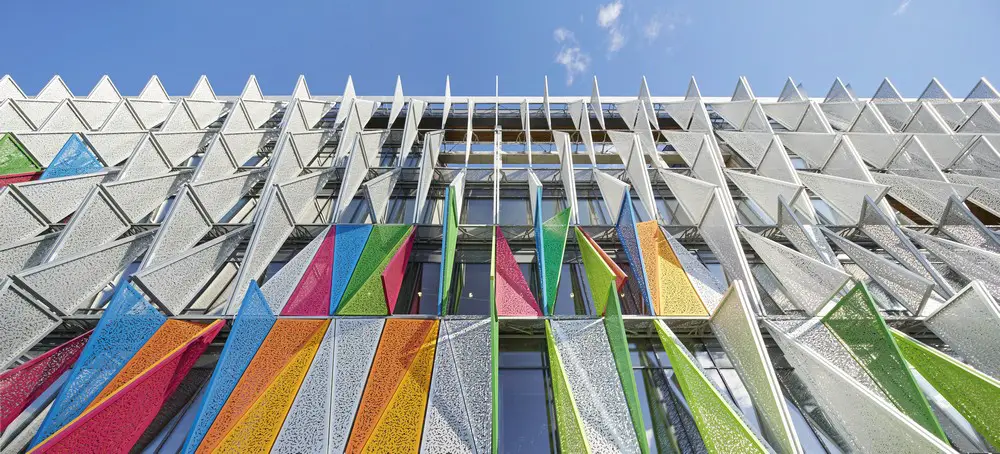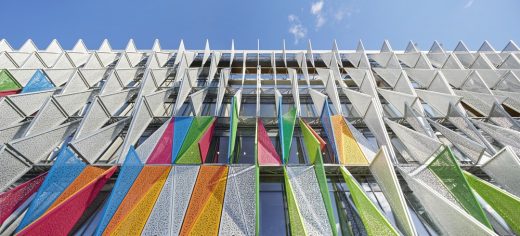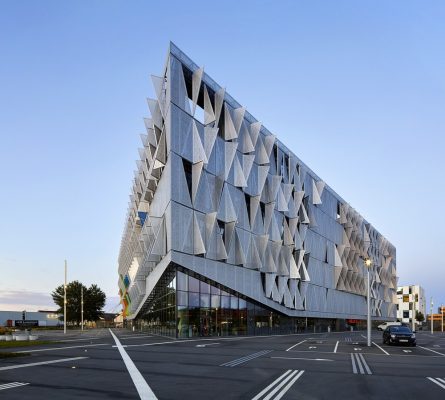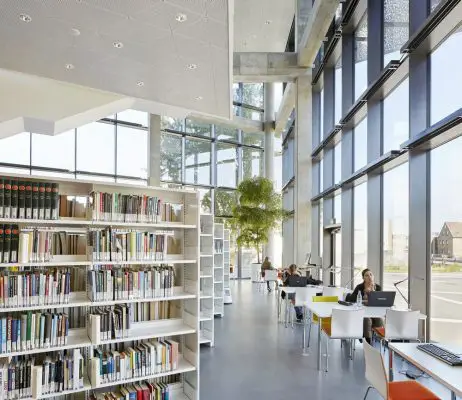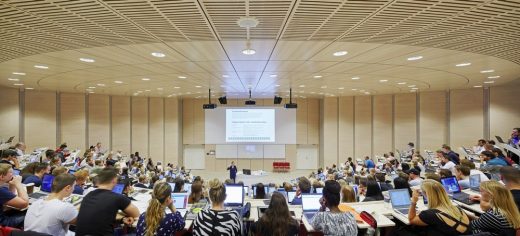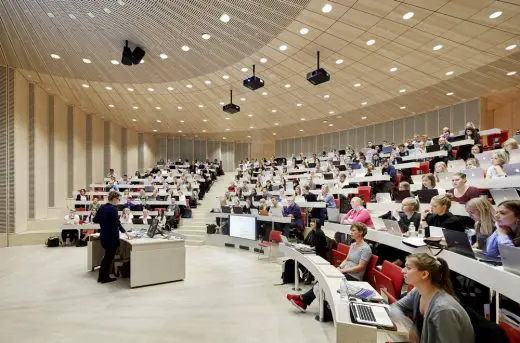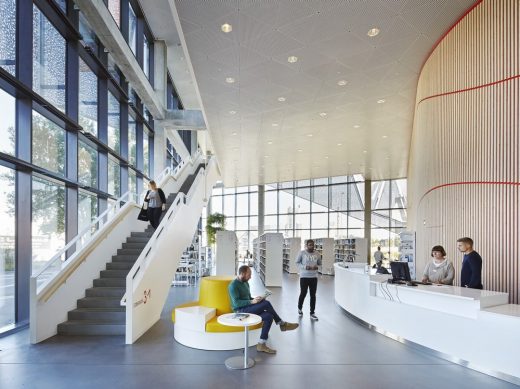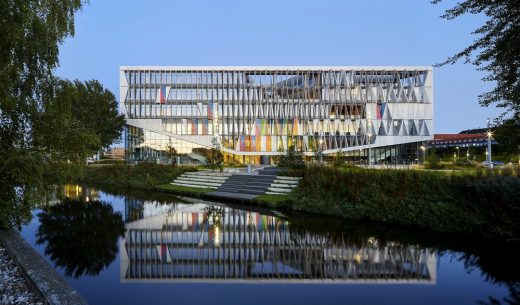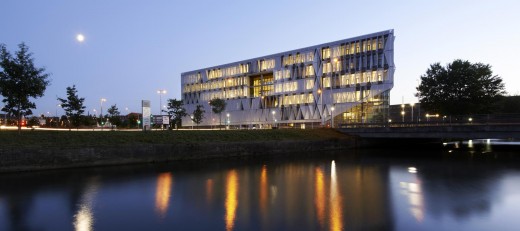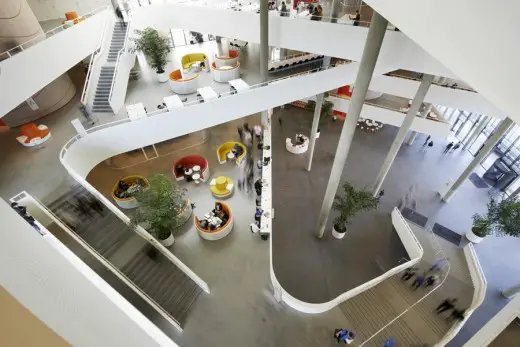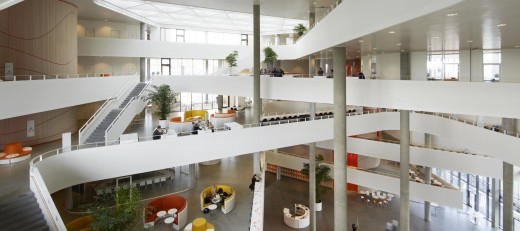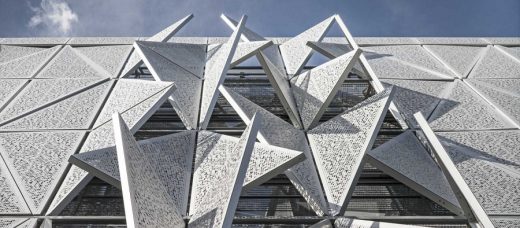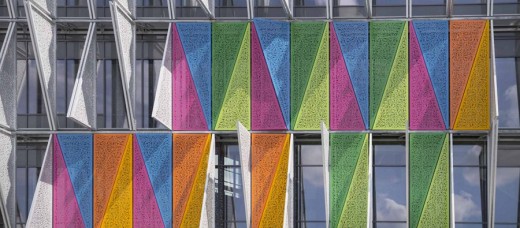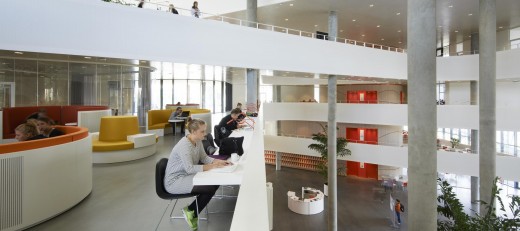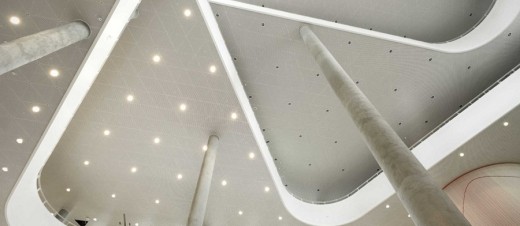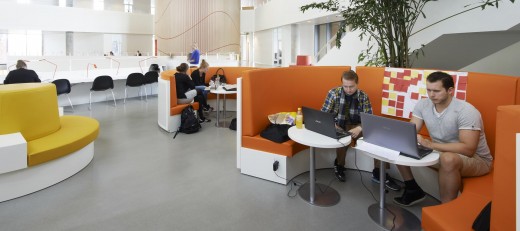Kolding Campus University of Southern Denmark Building, Danish Higher Education Architecture, Property
Kolding Campus University of Southern Denmark News
Danish Higher Education Building design by Henning Larsen Architects
Location: University of Southern Denmark, Denmark
Design: Henning Larsen Architects
Henning Larsen Architects Wins Prestigious Green GOOD Design Award
18 May 2016 + 7 Jan 2016
Kolding Campus
Green GOOD DESIGN Award honors extraordinary environmental performance and aesthetics of university campus
Internationally recognized Scandinavian architecture firm Henning Larsen Architects has announced that its design for SDU University of Southern Denmark, Campus Kolding has received the 2016 Green GOOD DESIGN award from the European Centre for Architecture, Art, Design, and Urban Studies and The Chicago Athenaeum: Museum of Architecture and Design.
Louis Becker, Principal Partner, Design Director of Henning Larsen Architects, said, “At Henning Larsen, we are dedicated to a holistic approach to architecture, one that puts people, space, and daylight first. To be recognized with a Green GOOD DESIGN Award underscores our commitment to building environments that benefit the community and bring value to our clients.”
The Kolding Campus building features an intelligent, perforated metal façade that automatically adjusts to different daylight scenarios and optimizes the balance between natural and artificial light in the building. Additional sustainable design elements include a combined heating and cooling pump that uses ground water to regulate the temperature throughout the building and natural nighttime ventilation of the central atrium. The first low-energy university in Denmark, the project has won multiple design awards, including the LEAF Award for Best Sustainable Development of the Year.
“Physical surroundings and educational achievements are not separate—they’re interdependent,” said Becker. “A successful educational building also enriches its users, fosters community, and improves the daily lives of students and teachers.”
Invoking sustainable design strategies has become the norm for many global architecture firms, but Becker says the difference between Danish-designed sustainable architecture and that of architects from other nations is that sustainability is inherent in the Danish culture. “The Danish model has always been sustainable because of the way we live,” said Becker. “We think about sustainability in a passive way—such as site orientation and a sensibility to light and space—at the start of the design process. Today, combined with modern technology we can optimize buildings and document results.”
Green GOOD DESIGN recognizes the world’s most important examples of sustainable design and fosters public awareness about companies that exemplify the highest standards for ecologically-oriented design practice. Prominent global manufacturers and Fortune 500 companies utilize the Museum’s GOOD DESIGN logo as a “seal of approval” for meeting the industry’s highest standard for Design Excellence. This year’s competition drew hundreds of entries from more than 20 countries.
Campus Kolding will be featured in a traveling exhibition of 2016 Green GOOD DESIGN winners, which will open in June 2016 in Athens, Greece.
Photography © Hufton+Crow
Kolding Campus at University of Southern Denmark
As the new learning centre of excellence, Kolding Campus will house the courses in communications, design, culture and languages of the University of Southern Denmark. The building is located on the Grønborg grounds in the centre of Kolding close to the harbour, station and scenic attraction of the river.
Kolding Campus will create a new central plaza by Kolding River and will thereby form a close interaction with the other educational institutions of the town, Kolding Design School and International Business College Kolding. The shape and facades of the building create a powerful dialogue between the inner life of the building and the outside observer.
The facade is an integrated part of the building and together, they create a unique and varying expression. Inside in the five floor high atrium, the displaced position of the staircases and access balconies creates a special dynamics where the triangular shape repeats its pattern in a continuous variety of positions up through the different floors. The activities open up towards the town so that the campus plaza and the interior study universe become one interconnected urban space with a green park at the back and a common recreational town plaza at the front.
The building features a number of sustainable initiatives, for instance cooling by means of water from Kolding River, mechanical low-energy ventilation and solar cells. The green areas are tied together in an ecological infrastructure, which will eventually become part of the research park.
A look inside the new triangular campus in Kolding:
Film on YouTube
An innovative facade
The daylight changes and varies during the course of the day and year. Thus, Kolding Campus is fitted with dynamic solar shading, which adjusts to the specific climate conditions and user patterns and provides optimal daylight and a comfortable indoor climate spaces along the facade.
The solar shading system consists of approx. 1,600 triangular shutters of perforated steel. They are mounted on the facade in a way which allows them to adjust to the changing intensity of daylight and desired inflow of light. When the shutters are closed, they lie flat along the facade. They protrude from the facade when open as desired and when entirely open they provide the building with a very expressive appearance. The solar shading system is fitted with sensors that continuously measure light and heat levels and regulate the shutters mechanically by means of a small motor
The perforation of the huge shutters is a light, organic pattern of round holes, which provides a distinctive play in the facade on the outside as well as a dynamic play of light on the inside. The holes in the facade are designed and adapted to an opening angle of approx. 30 %. Engineers and architects have conducted analyses and calculations to establish this as the optimal opening angle in relation to the amount of light and energy let in and out of the building – while at the same time providing users with optimal views to the outside urban space.
In the evening, the light from the inside will pour through the perforated pattern and make the facade appear more transparent. Passers-by or students on their way to or from the university will thus get an immediate sense of the interior activities of the campus. This interaction ensures a strong dialogue between the inner life of the building and the outside spectator.
Syddansk Universitet i Kolding, Danmark:
Film on YouTube
A learning centre of excellence
Strong focus has been on ensuring that the offices and group rooms on each floor are placed in the periphery. As required, these rooms can be opened up to the more vibrant study environment on the balconies just as the sliding doors make it possible to open up the rooms in connection with presentations and meetings. The balconies are based on individual as well as group environments and are furnished by means of low dividing elements enabling students to study individually or in groups at work stations on the study balconies, in the lounge areas or in the enclosed group rooms.
The objective behind the structure of all the floors has been to create cross-fields between professors, researchers and students while at the same time ensuring available areas for quite contemplation. By giving all users an errand on all floors, the number of cross-fields is maximised. The degree of community is up to each student. Everyone, researchers as well as students, has the opportunity to retire to the periphery or to be social and interact on the study balconies facing the atrium.
This feeling of community and energy comes off on users and on people’s view on the University of Southern Denmark as a university of the future that assigns a high priority to access to knowledge and social intercourse. In all ways, the new University of Southern Denmark will appear as an exciting, international study environment of benefit and inspiration to its users as well as the town of Kolding.
Kolding Campus University of Southern Denmark – Building Information
Location: Kolding, Denmark
Client: The Danish University and Property Agency
Gross floor area: 13,700 m2
Year of construction: 2012-14
Type of assignment: First prize in international competition, 2008
Landscape Architect: Kristine Jensens Tegnestue
Engineers: Orbicon
Kolding Campus University of Southern Denmark images / information from Henning Larsen Architects
Kolding Campus University of Southern Denmark design : Henning Larsen Architects
Links:
Website: University of Southern Denmark Kolding Campus – Henning Larsen Architects project page
University of Southern Denmark
The Danish University and Property Agency
Location: University of Southern Denmark, Kolding, Denmark
Architecture in Denmark
Danish Architecture Designs – chronological list
University of Southern Denmark Building
Student Housing in Odense, University of Southern Denmark, Odense, Denmark
Design: C. F. Møller
University of Southern Denmark Building
The design of the new student housing for the University of Southern Denmark in Odense is based on a strong community spirit. The 250 student residences are located in three interconnected 14-storey buildings.
Danish Architecture
Housing+, Aalborg, Jutland
C. F. Møller Architects
Aalborg Housing
Iceberg Project, Aarhus, Jutland
JDS + CEBRA
Aarhus Housing
Student Housing in Esbjerg, Jutland, eastern Denmark
CEBRA Architects
Danish Student Housing
Comments / photos for the Kolding Campus University of Southern Denmark – Danish Higher Education Architecture page welcome

